In a world where security threats are becoming more complex and interconnected, businesses and organisations must move beyond reactive security responses. A clear, well-structured security strategy is essential to anticipate threats, prevent incidents, and ensure continuity across all operations. Security strategy development provides a roadmap to address physical, operational, and technological risks in a cohesive and measurable way.
Whether you’re managing a corporate office, education facility, critical infrastructure site, or public venue, a proactive and adaptive security strategy ensures that your people, assets, and operations are protected from internal and external threats.
At Smartsec Security Solutions, we assist organisations in developing and implementing tailored security strategies aligned with their specific risks, compliance requirements, and operational needs.
What is Security Strategy Development?
Security strategy development is the process of designing a comprehensive, long-term plan to manage and mitigate security risks across an organisation. It involves identifying threats, assessing vulnerabilities, prioritising risks, and implementing appropriate controls.
A successful security strategy combines physical security, access control, surveillance, incident response, personnel awareness, and technology integration into a unified framework. It also ensures policies and procedures are aligned with organisational goals and relevant regulatory standards.
Why Security Strategy Development is Crucial
Many organisations implement security measures in an ad-hoc or reactive manner, often in response to a recent incident. This can lead to duplicated efforts, budget inefficiencies, and critical blind spots. Security strategy development helps organisations:
- Anticipate and reduce potential risks before they escalate
- Align security measures with business objectives and operational workflows
- Optimise the use of resources and reduce unnecessary spending
- Meet regulatory compliance and industry standards
- Build resilience and prepare for crises and emergencies
Without a strategy in place, security becomes fragmented, leaving organisations exposed to evolving and emerging threats.
Key Components of a Strong Security Strategy
Risk Assessment and Threat Analysis
Every security strategy should begin with a thorough risk assessment. This involves:
- Identifying physical, operational, and technological threats relevant to the business
- Analysing vulnerabilities across people, processes, and systems
- Prioritising risks based on likelihood and potential impact
- Reviewing historical incident data and industry-specific threat trends
The risk assessment forms the foundation for decision-making, allowing organisations to implement controls where they are needed most.
Defining Security Objectives and Priorities
Security goals must be clearly defined and aligned with the organisation’s broader mission. These objectives typically include:
- Protecting people, property, and sensitive information
- Preventing unauthorised access or interference with critical systems
- Ensuring business continuity in the event of a security breach
- Promoting a culture of safety and awareness across the organisation
Setting clear objectives enables measurement and accountability, ensuring the strategy can evolve and adapt over time.
Physical Security Planning
Physical security remains a critical aspect of overall protection. Key areas include:
- Perimeter security, including fencing, barriers, and intrusion detection
- Access control systems to regulate entry to buildings and restricted areas
- CCTV and surveillance infrastructure to monitor activity and collect evidence
- Lighting, signage, and visibility enhancements to deter criminal activity
- Security personnel deployment, patrols, and coordination protocols
These measures must be tailored to the facility type, threat level, and operational requirements.
Technology Integration and AI-Driven Security
Modern security strategies incorporate smart technology to improve efficiency and responsiveness. This may involve:
- AI-powered video analytics for automated threat detection
- Facial recognition or licence plate recognition for access control
- Remote monitoring and cloud-based surveillance platforms
- IoT sensors to monitor access, environment, or asset movement
- Integration of alarms, access control, and CCTV into a central platform
Technology should enhance, not replace, human decision-making, providing faster insights and real-time alerts.
Policies, Procedures, and Training
Effective security depends on clear procedures and staff understanding of their roles in maintaining security. Key components include:
- Workplace security policies covering access, conduct, reporting, and emergency procedures
- Standard operating procedures (SOPs) for routine security tasks
- Incident response plans to ensure a structured approach during emergencies
- Security awareness training for employees, contractors, and stakeholders
- Role-based responsibilities to ensure clarity and coordination
These documents should be accessible, regularly reviewed, and updated as threats evolve.
Compliance and Regulatory Alignment
Organisations must meet legal and industry standards relating to security, safety, and data protection. A security strategy must consider:
- Australian Standards (such as AS 2201 for alarms or ISO 31000 for risk management)
- Work Health and Safety (WHS) requirements
- Privacy regulations for surveillance, data storage, and access logging
- Sector-specific requirements (e.g. aviation, education, aged care)
Regular audits and reviews ensure compliance and reduce the risk of regulatory breaches.
Emergency Management and Business Continuity
Preparedness is vital for responding effectively to crises. Security strategy development includes:
- Emergency response plans for lockdowns, evacuations, or active threats
- Communication protocols to notify and coordinate with internal and external teams
- Continuity planning to maintain operations during or after an incident
- Coordination with emergency services and local authorities
Testing and updating these plans ensures that when an incident occurs, response is swift and effective.
Ongoing Monitoring, Evaluation, and Improvement
A security strategy is not static. It must be monitored, tested, and adapted as the business changes or new risks emerge. Ongoing processes include:
- Security system audits and performance reviews
- Analysis of incident reports and near-misses
- Feedback from staff and stakeholders
- Incorporating lessons learned from internal or industry incidents
- Reassessing risks as new threats or technologies emerge
A commitment to continual improvement helps maintain resilience over the long term.
Common Pitfalls in Security Strategy Development
While developing a security strategy, some organisations make mistakes that weaken their overall protection. Common pitfalls include:
- Failing to align the strategy with actual operational risks
- Over-reliance on technology without strong procedures and training
- Lack of clarity in roles and responsibilities
- Not involving key stakeholders in the planning process
- Poor documentation or communication of policies and plans
- Ignoring the need for regular updates and reassessment
Avoiding these issues requires a structured approach and a clear understanding of security as a business-critical function.
How Smartsec Security Solutions Can Help
At Smartsec Security Solutions, we help organisations develop and implement robust, tailored security strategies. Our services include:
- Comprehensive security risk assessments and threat profiling
- Strategic planning for physical, personnel, and technological security
- Integration of AI and smart surveillance systems
- Development of SOPs, policies, and incident response plans
- Compliance support with Australian regulations and standards
- Independent, expert guidance to ensure cost-effective security solutions
We work closely with stakeholders to ensure the strategy is practical, scalable, and aligned with your organisation’s operations and objectives.
Build a Resilient Security Framework Today
Security strategy development is an essential part of managing risk in any organisation. A strong, adaptable plan ensures your people, assets, and operations are protected in a way that supports your goals and reduces exposure to threats.
If your organisation is ready to take a proactive approach to security, contact Smartsec Security Solutions for independent guidance and expert support. Visit Smartsec Security Solutions – Security Consulting Services to learn more about how we can help you design and implement a security strategy that works.



